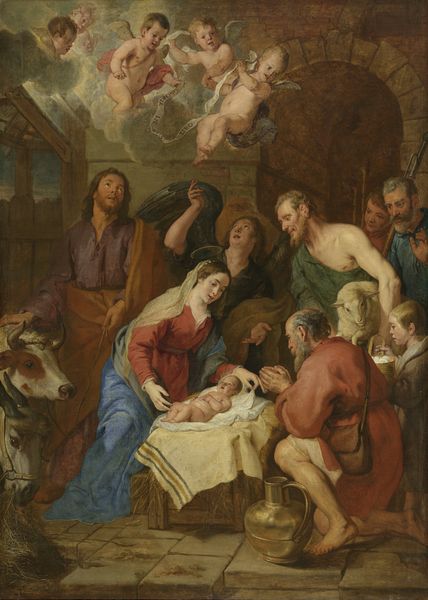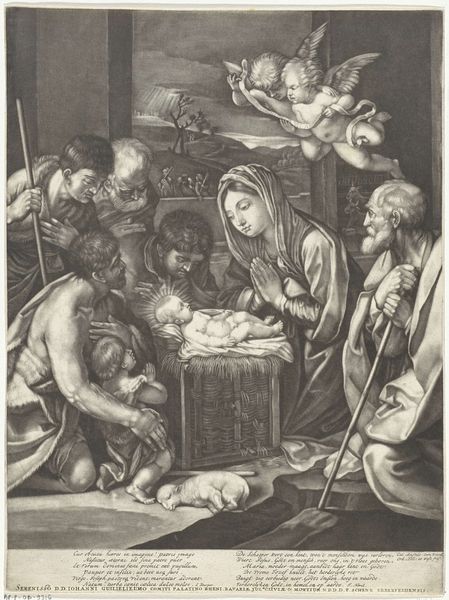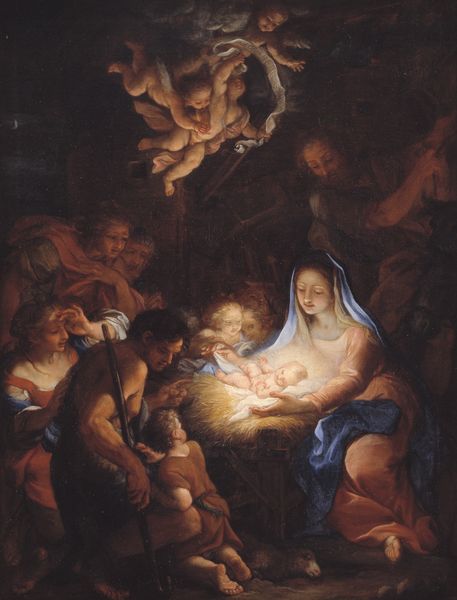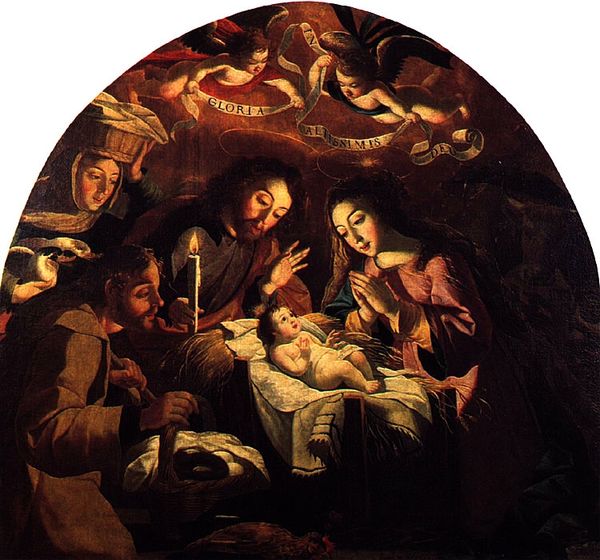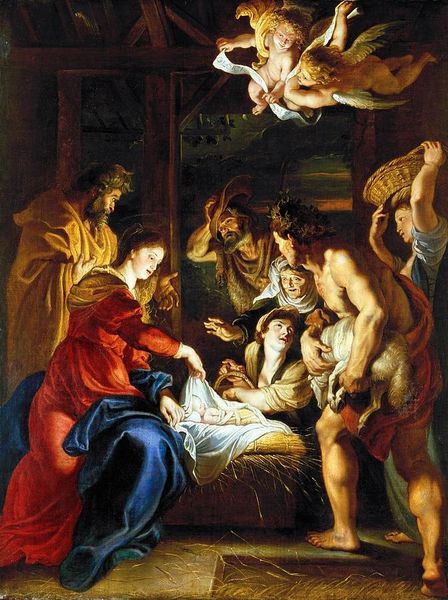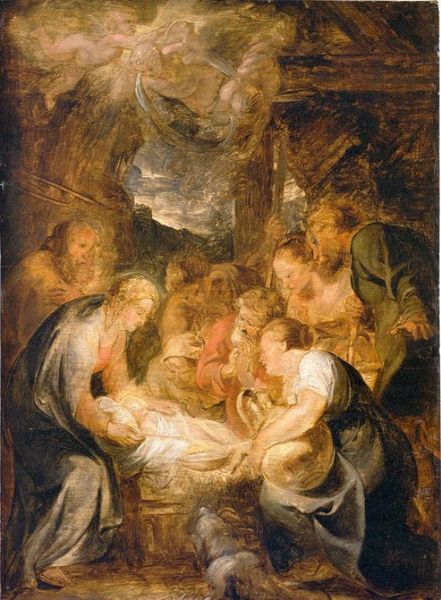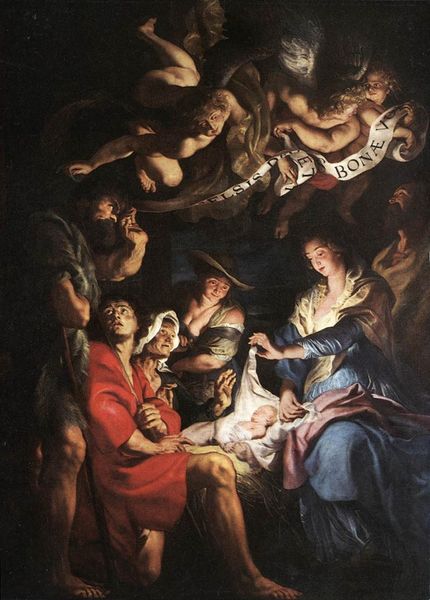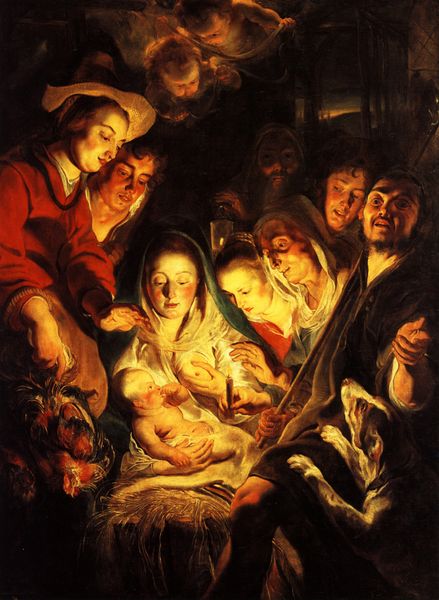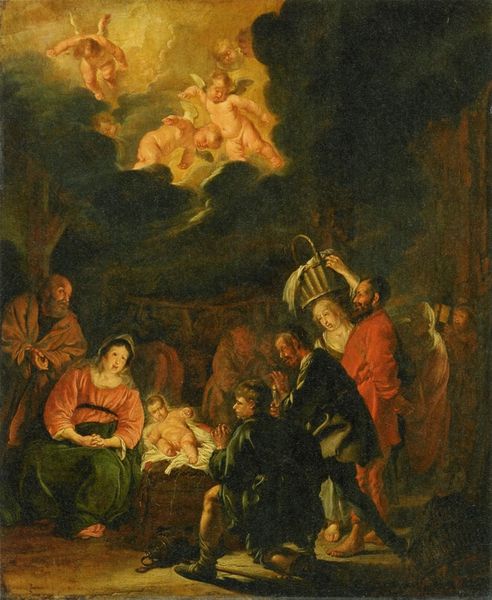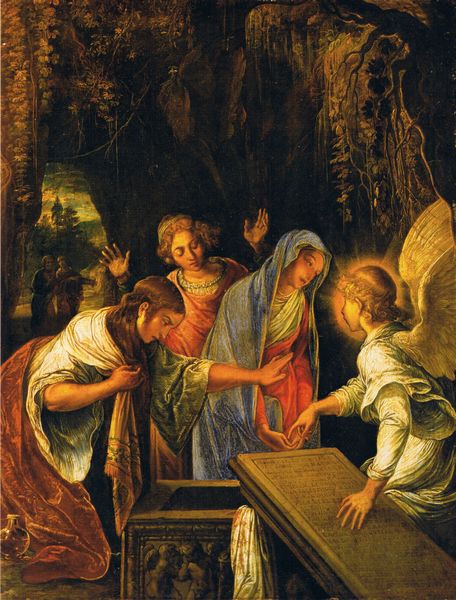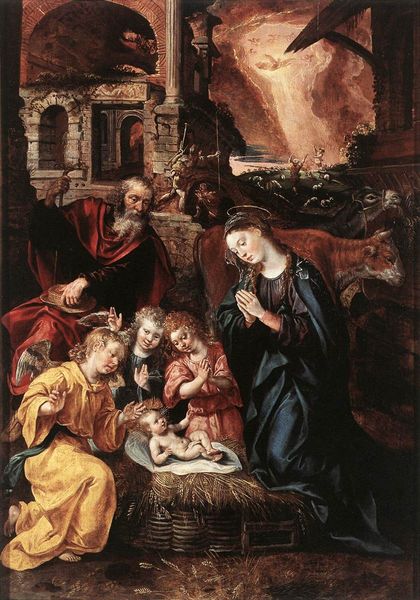
Adoration of the Shepherds (The Holy Night) 1530
0:00
0:00
correggio
Gemäldegalerie Alte Meister, Dresden, Germany
oil-paint
#
oil-paint
#
landscape
#
figuration
#
oil painting
#
jesus-christ
#
christianity
#
men
#
history-painting
#
italian-renaissance
#
angel
#
christ
Dimensions: 256 x 188 cm
Copyright: Public domain
Editor: Here we have Correggio’s “Adoration of the Shepherds,” also known as “The Holy Night,” from around 1530, rendered in oil paint. I’m really struck by the use of light; it's almost theatrical. It's like the entire painting revolves around the infant Jesus as the focal point, with other figures lurking in the shadows. What’s your take on this, viewed through a historical lens? Curator: Correggio’s masterful use of light, specifically his nocturne-like setting, signals a significant shift in the function of religious art during the Renaissance. The painting wasn’t just a depiction; it was intended to evoke a deeply emotional, even mystical experience. The artificial light emanating from the Christ Child challenges artistic conventions and traditional authority. Editor: Artificial light, you say? I was assuming it was divine, rather than artificially depicted light. Curator: Precisely. This painting coincides with rising patronage and competitiveness in the art market; creating uniquely emotional and visually spectacular pieces gave Correggio a competitive edge and brought acclaim and greater power. Where would a piece like this hang? And who would commission such a daring image? Those questions start to unravel the way in which wealth shapes the artistic image in service of self-aggrandizement. Editor: So, it’s as much about Correggio's ambitions as it is about the nativity scene? Curator: Art never exists in a vacuum. The power structures of the time—patronage, religious institutions, social expectations—all influenced its creation and reception. Editor: This has changed my view on the painting significantly. Thanks! Curator: Indeed. Art history encourages us to think critically about the power dynamics behind what we see, who commissioned, who benefitted, who saw the work in its own time.
Comments
No comments
Be the first to comment and join the conversation on the ultimate creative platform.
